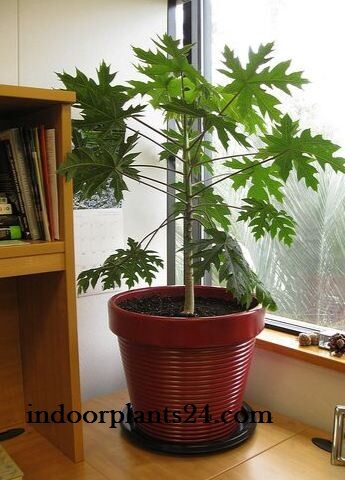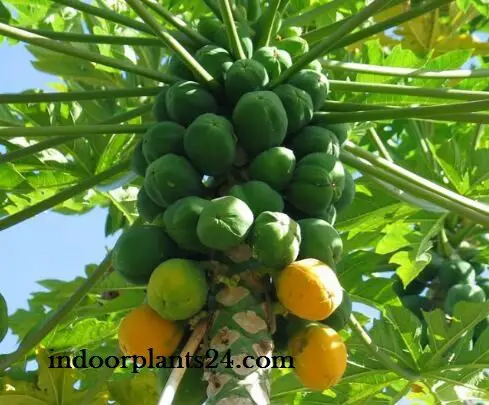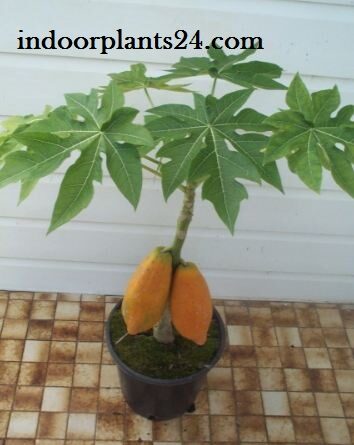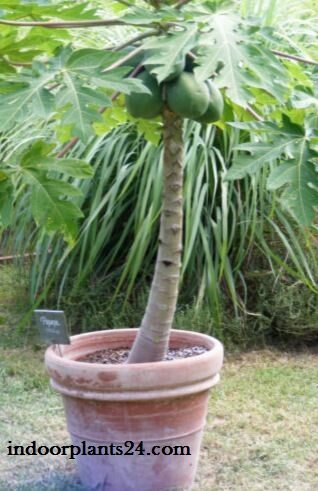07:40 Widely grown in tropical countries for its fruit, the papaya makes an unusual ornamental foliage plant. The straight stem is usually unbranched and is topped by a cluster of long-stalked, deeply lobed leaves, which may reach up to 2ft/60cm wide on large plants.

The fragrant trumpet-shaped flowers, borne in summer, are cream or yellow and up to lin/2.5cm long. Male and female plants in close proximity are required if fruit production is the aim, although bisexual plants that have both male and female flowers, such as Carica papaya ‘Solo,’ have been bred. When the papaya is grown as a houseplant, pollination by hand may be necessary.

The 5-12-in/13-30-cm-long melonlike fruits are borne directly on the trunk, in the leaf axils. They are green and turn yellow or orange when ripe. The firm, fragrant flesh is yellow to pinkish orange.

FACT FILE
ORIGIN Tropical America.
HEIGHT To 10ft/3m in a container.
POTTING MIX Soil-based with good drainage.
REPOTTING Move young plants into a pot one size larger as they fill the container with roots.
PROPAGATION Seeds are frequently available commercially and can be saved from fruits. Sow in spring, in a temperature not lower than 75°F/24°C. They may not come true to type.
KEEPING PLANTS Replace the plant every 4 years or so. 
PLANT CARE
- Full sun will help to ripen the fruits; as an ornamental, the plant will tolerate partial shade.
- Normal warm conditions, with a minimum winter temperature of 60°F/16°C.
- A temperature of at least 60°F/16°C is necessary to ripen fruit.
- Water well all year-round but do not overwater.
- If the soil becomes waterlogged, it will kill the plant within days.
- Apply a weak liquid fertilizer every 2 weeks during the period of active growth.
- Share
- Share
- Share
- Share
